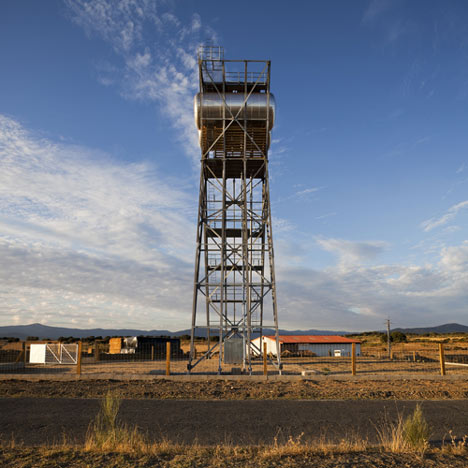

 Why not divide the tank into prefabricated units? We worked to find the best form for a structure that could reach 22 m of height and also support the weight of two tanks, each of 40 m³ capacity. We had at the moment two materials that defined the new water tower; the galvanized steel that would form the structure and the stainless steel that would make up the exterior finish of the two tanks.We chose wood to form the stairs and platform necessary for the maintenance of the water tower, the platform for the valves, and the bed underneath these two elements. We completed and gave the project form in this way.”
Why not divide the tank into prefabricated units? We worked to find the best form for a structure that could reach 22 m of height and also support the weight of two tanks, each of 40 m³ capacity. We had at the moment two materials that defined the new water tower; the galvanized steel that would form the structure and the stainless steel that would make up the exterior finish of the two tanks.We chose wood to form the stairs and platform necessary for the maintenance of the water tower, the platform for the valves, and the bed underneath these two elements. We completed and gave the project form in this way.”